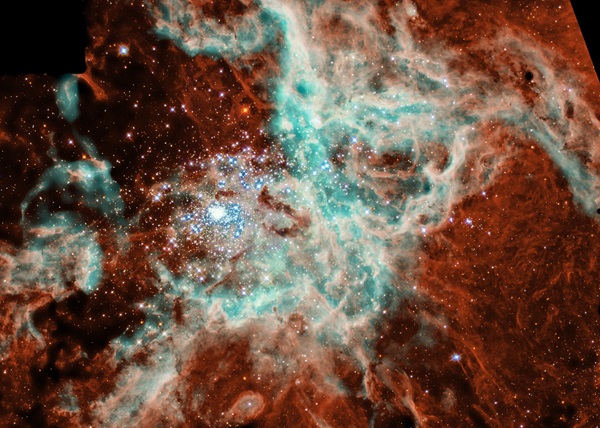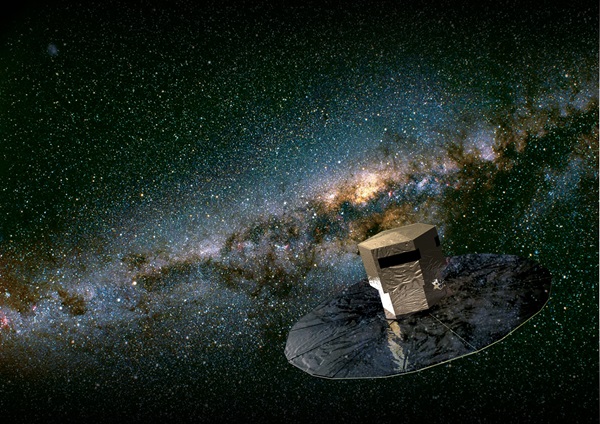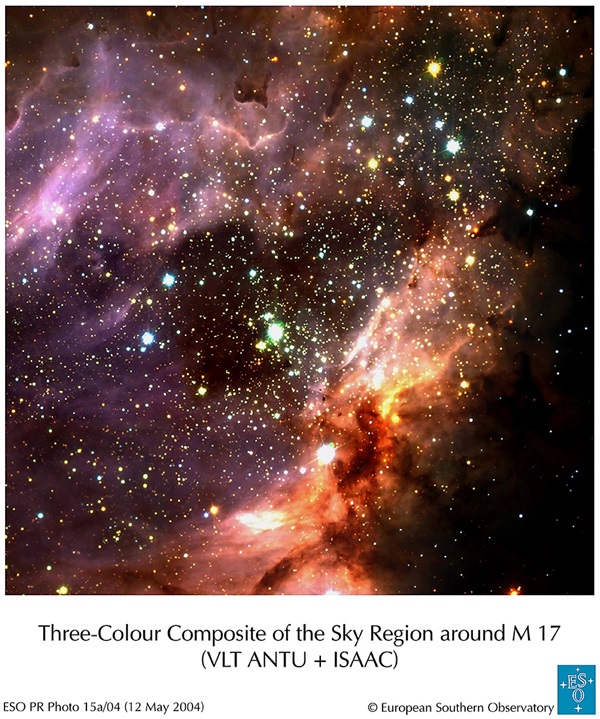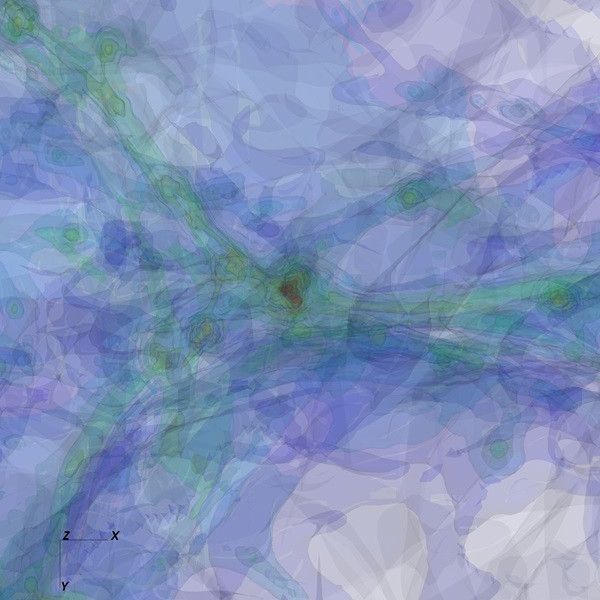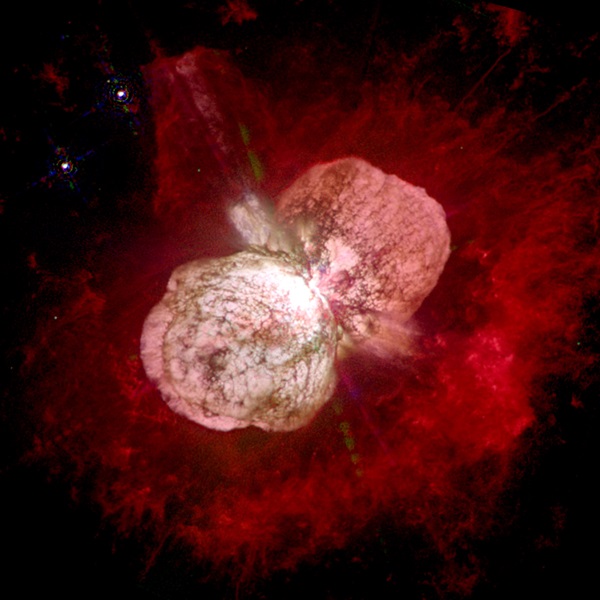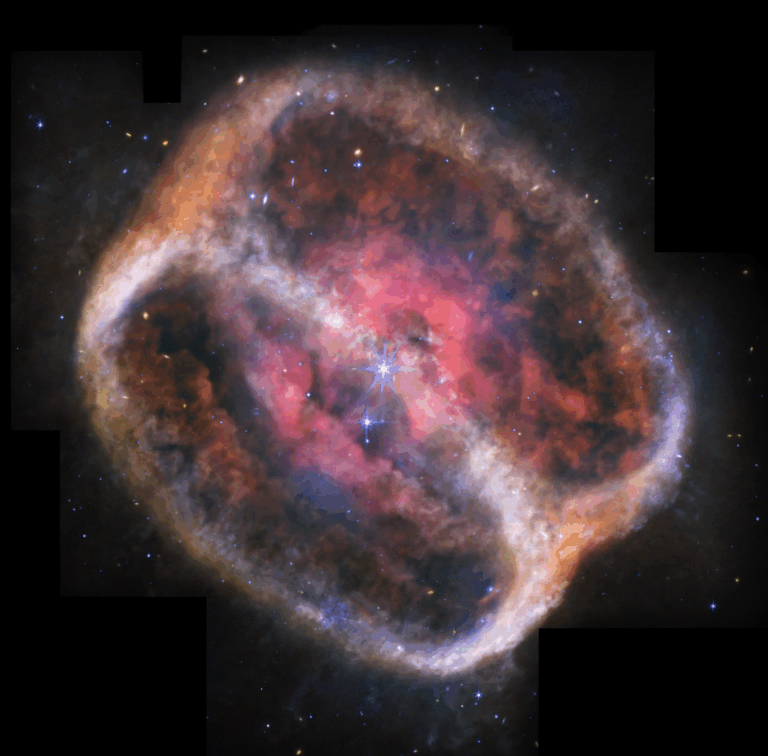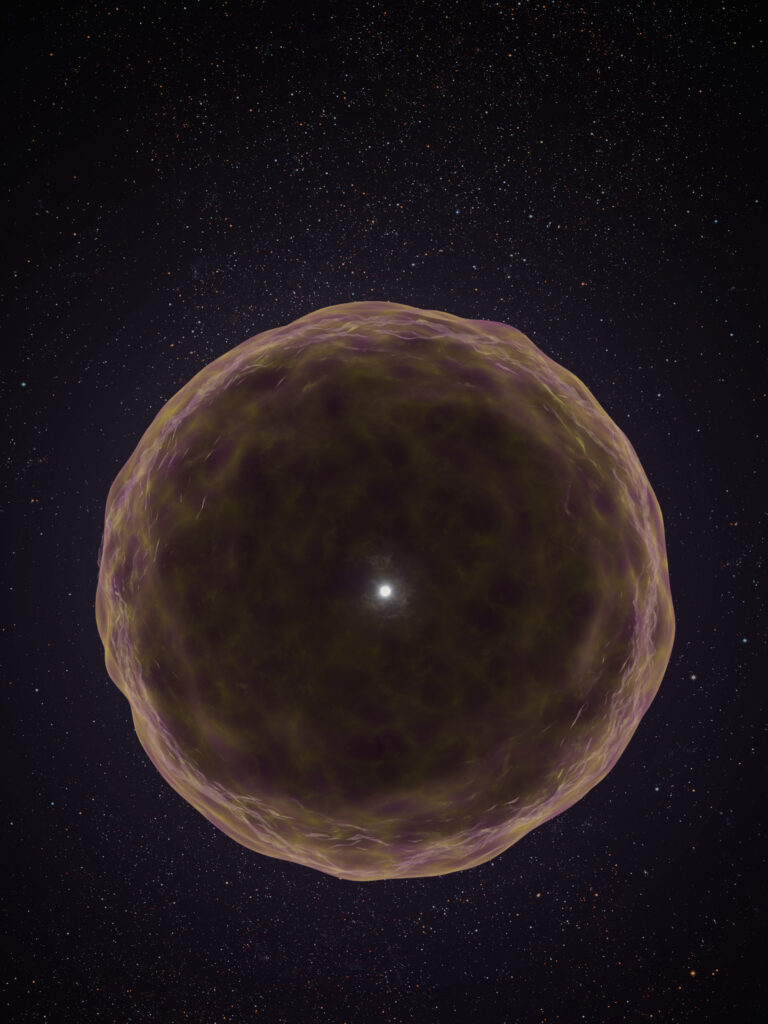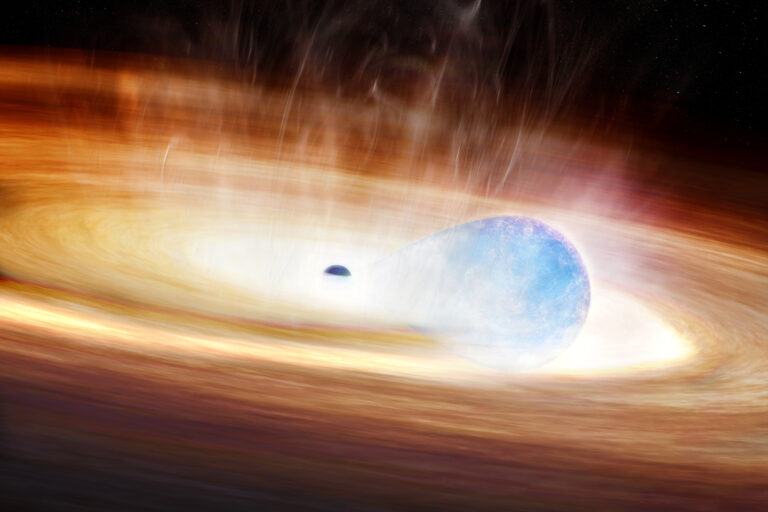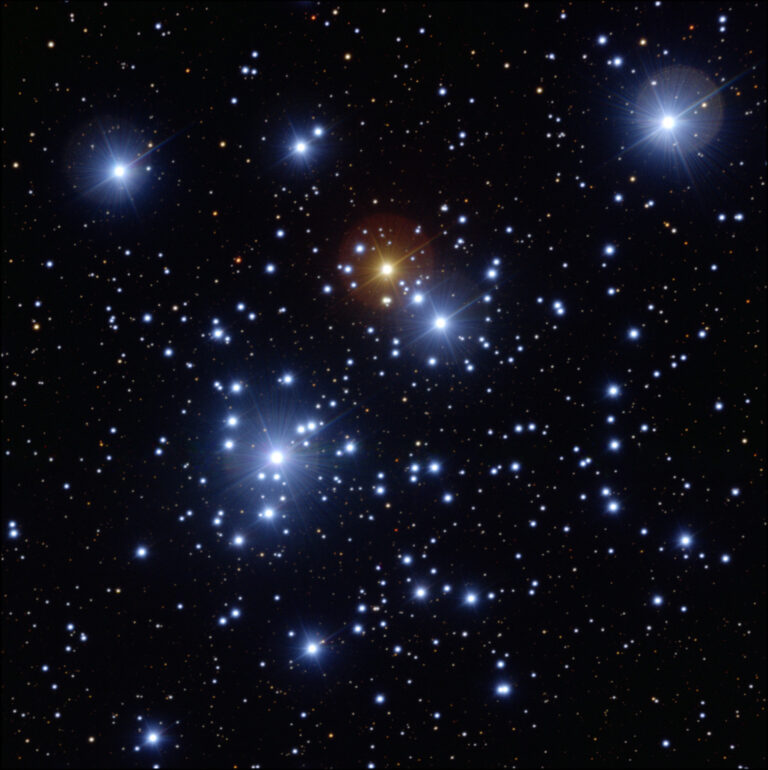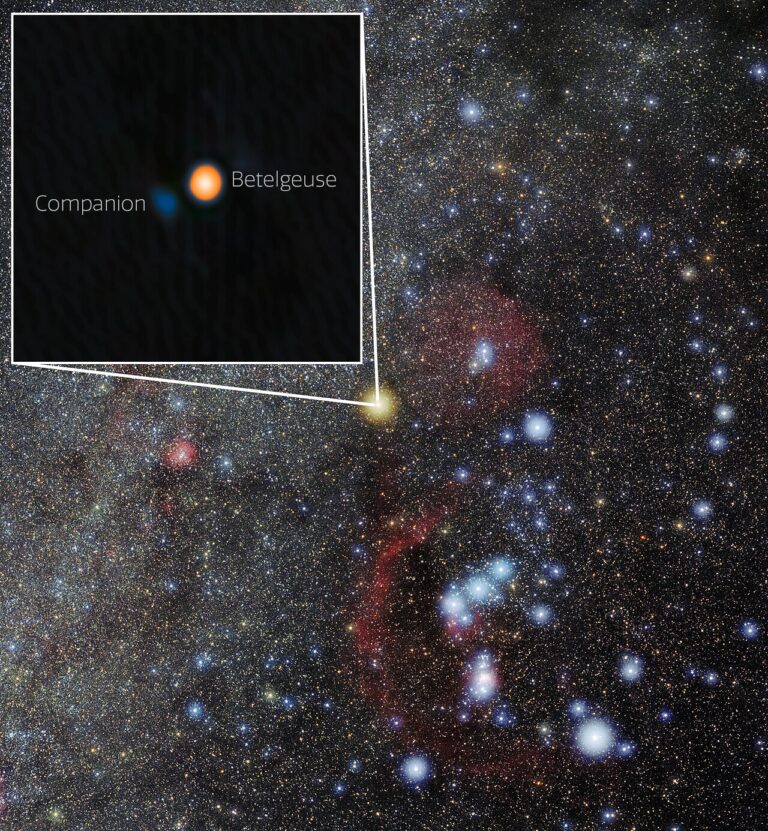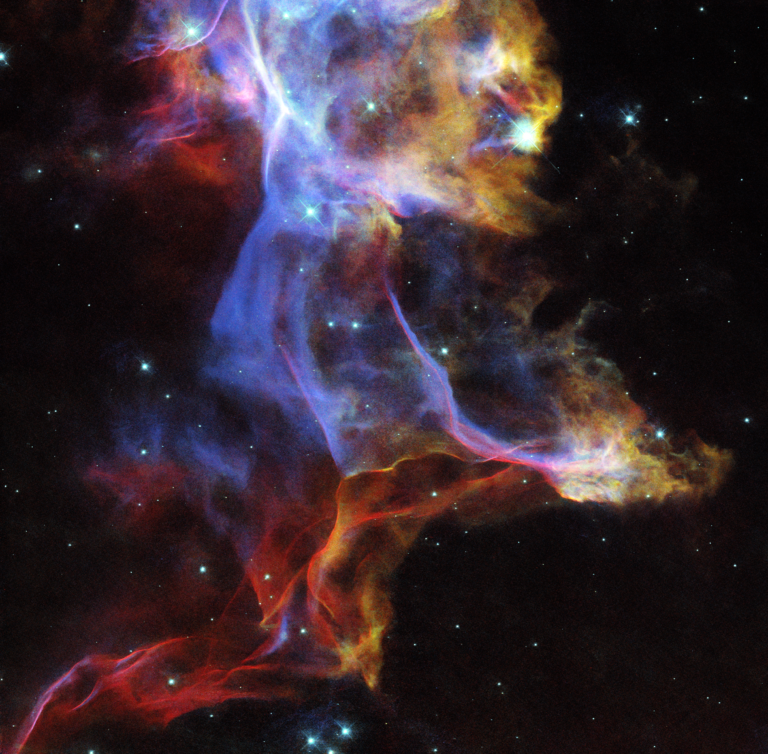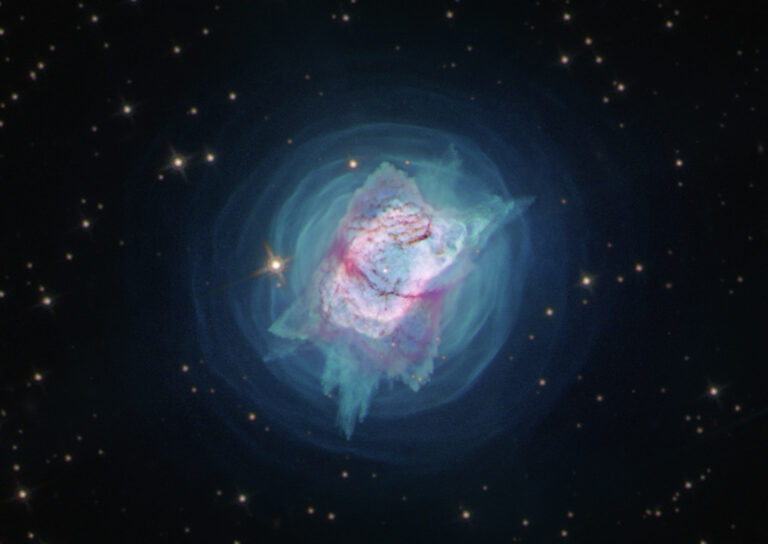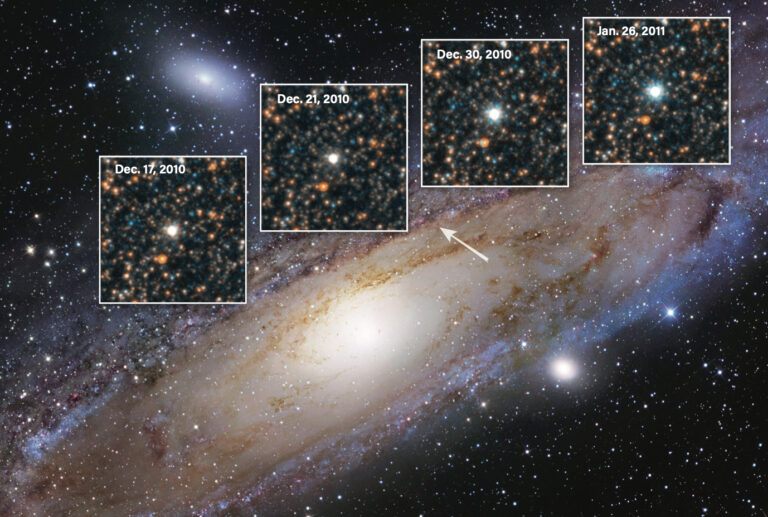The universe continues to baffle the great minds of our age. Yet, ask most people where the deepest mysteries lie, and you’re apt to hear discussions on the origin and fate of the cosmos, the nature of dark matter, and the existence of extraterrestrial life. Astronomers must have figured out all there is to know about mundane objects like stars, right?
Not so. These ubiquitous building blocks of galaxies still hold many secrets. The greatest questions surround the stars with the most mass. On a cosmic scale, these rare behemoths last only for the blink of an eye. Yet, in their short lives, they forge heavy elements — the raw material for future generations of stars, planets, and perhaps life — and then eject them into the cosmos in titanic explosions.
A decade ago, Cássio Barbosa of Brazil’s University of São Paulo and Donald Figer of the Rochester Institute of Technology surveyed their fellow researchers to find out the most pressing questions facing theorists and observers. Here are 10 topics that still keep their minds busy.
1. How far away are massive stars?
It’s so simple a question, it seems extraordinary we don’t yet know the answer. After all, astronomers have accurate distances to a host of low-mass and midsize stars. The best method for getting reliable distances involves measuring the position of a nearby star relative to more distant objects from opposite sides of Earth’s orbit. Simple trigonometry then converts the star’s observed angular displacement into a distance.
Unfortunately, these angles are so small, the method can be applied only to the Sun’s close neighbors. Before 1989, this technique had yielded just a few hundred precise distances. Things changed that year with the launch of the European Space Agency’s (ESA) Hipparcos satellite. Thanks to its 3.5-year mission, astronomers had reliable distances — meaning an uncertainty of less than 10 percent — to nearly 120,000 stars out to some 300 light-years.
Yet, this seemingly large sample of solar neighbors does not contain a single massive star. So rare are these heavyweights that the nearest one lies well over 300 light-years away. Astronomers can only estimate the distances to these stars: The closest O-type star, Zeta (ζ) Ophiuchi, lies roughly 370 light-years away; the nearest Wolf-Rayet star belongs to the binary system Gamma² (γ²) Velorum, and it checks in at a distance of more than 1,000 light-years.
Without a precise distance, it’s impossible to know a star’s real properties, like luminosity, and this leads to uncertainty in theoretical models. Massive stars easily rank as the most luminous in the cosmos — the brightest outshine the Sun by a million times. And these are the only stars bright enough for us to see in distant galaxies. So, understanding massive stars better will improve our knowledge of extragalactic astronomy.
This first problem should be solved quickest. ESA launched Gaia, a successor to Hipparcos, in 2013. This satellite, which lies nearly a million miles beyond the Moon, should get accurate distances to a billion stars out to a distance of 30,000 light-years. That’s far enough to pinpoint a significant fraction of all the Milky Way’s massive stars.
2. How do massive stars form?
The birth of monster stars provokes heated quarrels among specialists. Two theories confront each other. In the first, massive stars form like their low-mass cousins. Gravity causes an interstellar gas cloud to collapse and fragment, with both big and small stars forming in the process.
The problem: Massive objects should start nuclear reactions long before they reach final form. The reactions emit intense radiation that should stop more matter from falling in. A slight alteration may save this idea. Scientists now suggest the largest fragments become midsize protostars, each surrounded by an accretion disk. The growing stars gain weight by feeding off their disks. Observations have found at least one massive star, located in the Omega Nebula (M17), forming as this model predicts.
Another group has performed simulations that show instabilities in the formation process create channels to funnel out the radiation while allowing the gas to accrete.
Other observations imply massive stars are born when smaller objects collide — the second theory of high-mass star formation. Most big stars live in clusters, and the more stars a cluster contains, the more massive the largest stars are. X-ray observations reveal lots of low-mass stars near the massive objects. Could they be a food reservoir?
Computer simulations show collisions can be an effective method of creating massive stars. Nevertheless, not all massive stars belong to clusters. Were these solitary gems born in a different way, or were they violently ejected from their birthplaces?
For the moment, astronomers have yet to reach a consensus. Some scientists think both processes could act simultaneously.
3. What is a star’s maximum mass?
At the beginning of this century, some researchers claimed they had discovered stars with extraordinary masses. For example, R136a — the central region of the star-forming Tarantula Nebula in the Large Magellanic Cloud (LMC) — was thought to be a single star containing 2,500 solar masses. However, the illusion has passed. Most of these mass estimates were done by indirect means. Better observations showed the apparently ultramassive stars are dense clusters of smaller stars possessing more reasonable masses.
Still, determining how much massive stars weigh proves difficult. Statistical surveys of big clusters have shown that no star with a mass larger than 150 to 200 solar masses exist. The only reliable method involves studying binary-star orbits. An orbit’s size and period depend on the stellar masses. To date, two binary pairs appear most promising. One of those pairs, the Milky Way’s WR 20a contains two stars that each weigh about 80 solar masses.
However, more massive stars may be out there. For example, the star HD 15558 may contain 152 solar masses — plus or minus 46 solar masses; the star WR 25 may contain 75 solar masses.
Apart from direct observation, astronomers also wonder if a physical limit exists beyond which no star can form. If so, does the limit depend on the content of heavy elements in the gas from which the star formed, instabilities in the protostar’s structure, dynamical processes within the cluster, or accretion problems?-
4. What role did massive stars play after the Big Bang?
In the minutes following the Big Bang, the universe synthesized only a few light elements: hydrogen, helium, and lithium. From this mixture, the first stars were born.
Astronomers call this initial stellar generation “Population III.” These peculiar, early stars played a crucial role in cosmic evolution because they sowed the universe with heavier elements and, thanks to their ionizing radiation, made the cosmos transparent again. These missing links between the Big Bang and today will help scientists understand the current face of the universe.
Theoretical models indicate these stars were born 100 to 250 million years after the Big Bang and each contained several hundred times the Sun’s mass. These enormous objects died in gigantic supernova explosions that ejected all the elements these stellar “nuclear factories” had synthesized. If our bones contain calcium, our computers silicon, and our power plants uranium, thank these stars and their massive descendants. Nobody knows how such large objects formed, or even what properties they possessed. Of all the mysteries facing astrophysicists, the lives of Population III stars may be the hardest to solve because none of their kind survives.
5. How do massive binary stars form?
Massive stars often turn up in pairs, just like stars with lower masses. If theorists already have a hard time determining how single massive stars formed, the problem becomes more acute with binaries.
Astronomers have developed several scenarios. “Capture” almost certainly plays a role. In a cluster, stars continually move around and occasionally graze each other. When stars meet, a couple can form, although astronomers debate how frequently it occurs.
A second process involves “fission.” A star that rotates rapidly bulges at the equator. Crank the rotational speed high enough, and it can break in two. Unfortunately, only close binaries can form by fission, and some massive binaries have wide separations.
The final idea is “fragmentation” — a protostellar cloud breaks into several pieces that remain near one another. Or, a protostar might be surrounded by a massive accretion disk that coalesces into another star.
Although astronomers have yet to explain how massive binaries form, nature has found a way to create them. Massive pairs populate the galaxy, and some are true behemoths — each component of WR 20a contains approximately 80 times the Sun’s mass.
6. Can planets form around massive stars?
No planet has been found orbiting a massive star. But absence of evidence is not evidence of absence — particularly in this instance, because most planet searches have been conducted on Sun-like stars.
Planets form from circumstellar disks of gas and dust. But how long can such disks survive around massive stars? Plus, heavy stars exhaust their nuclear fuel in a few million years. Can planets form that fast?
Finally, conditions near a massive star are not friendly. These hot suns emit large amounts of ultraviolet radiation and ionized particles. The stellar winds carry away up to 10 billion times as much material as the solar wind at speeds of thousands of miles per second. So, even if planets do form around massive stars, they don’t survive for long.
7. What role do rotation and magnetic fields play in massive stars?
Astronomers didn’t develop the current stellar models in a single day. These complex models already include a large number of parameters, but scientists have only begun to include two crucial factors: rotation and magnetic fields.
Astronomers see rotation everywhere in the universe. Planets and stars spin, galaxies rotate, and even galaxy clusters conduct their own celestial ballets. Researchers haven’t been lazy by neglecting this factor in their stellar models; it’s just that rotation creates theoretical and practical problems.
Although advanced computing power is starting to overcome the numerical obstacles, other problems still will exist. For example, how do the interiors of massive stars rotate? Current research in astroseismology only begins to answer this question. The first measurement of the internal rotation of a star other than the Sun was made in 2003, and that was for a lower-mass object. Moreover, although astronomers agree rotation is a vital parameter, no one knows exactly how it influences the birth and evolution of massive stars.
Magnetic fields fall in the same category. They seem to be ubiquitous, showing up on Earth, Jupiter, the Sun, pulsars, and even in the interstellar medium. They likely exist in massive stars (and astronomers even have detected a few cases). As with rotation, however, including this parameter in stellar models is a tricky business, and the first attempts have only recently been made. Will adding rotation and magnetic fields alter our ideas about massive stars?
8. How do single massive stars evolve?
The lives of massive stars, although short, fuel intense debate. In broad outline, astronomers use the so-called Conti scenario to describe these objects’ evolution. A massive star spends its adult life as an O-type star, emitting a fast and fairly dense stellar wind.
When the nuclear fuel starts to dwindle, the star evolves into either a red supergiant or a luminous blue variable (LBV) depending on its initial mass. During this stage, the star’s stellar wind increases in density and slows dramatically — to only a few miles per second compared with thousands of miles per second for the adult star. LBVs even experience gigantic eruptions.
Next, the star becomes a Wolf-Rayet star — the mass loss goes down, but the wind picks up. Throughout the star’s life, the wind ejects matter and effectively peels the star. Layers with heavy elements gradually come to the surface. A Wolf-Rayet star becomes enriched first in nitrogen (a WN type), then in carbon (a WC type).
The Conti scenario may seem clear, but many details remain vague. The most contentious area concerns the LBV phase: What starts and stops LBV eruptions? Does the star’s metal content play
a role at the eruption’s start? The most famous LBVs — Eta Carinae and HD 5980 — are binary systems; is this a necessity? What is the lowest stellar mass that can create such an event? Can we see a signature of this phase once the star evolves into a Wolf-Rayet?
9. How do massive binaries evolve?
Massive binaries evolve in even more complex ways than single objects because the components interact throughout their lives. A companion’s presence affects many stellar properties. For example, a massive companion can tidally deform a star so it’s not spherical anymore. The neighbor’s presence also changes each star’s rotation. In a binary system, the stars’ rotation periods often equal their orbital periods, so each star shows the same face to its companion throughout the orbit.
Even more complex phenomena take place. In massive binaries, the dual stellar winds collide, generating intense X-ray emission and changes in the system’s optical spectrum. Astronomers are just beginning to study these effects. The space mates likely also exchange matter, with the cannibal partner sucking up its companion’s wind or perhaps even part of its surface. What would happen if the more massive and evolved star suddenly became the less massive?
Even if nothing much happens to the system during the stars’ lives, what if one of the partners suddenly dies? Can the system survive a supernova explosion? And, if so, how would a binary system composed of a normal massive star and either a neutron star or black hole evolve? Studies show that a compact object can spiral toward its companion and might even venture inside the other star. How would that situation change the other star’s evolution?
Astronomers have found binary systems comprising two pulsars, so we know massive binaries can survive. But there’s still a long way to go before we understand how systems reach such an end.
10. How do massive stars die?
If Sun-like stars die rather quietly, massive stars end in cataclysm — a supernova explosion announces the death to the entire galaxy and beyond. Yet, forensic astronomers have questions about this process.
A massive star explodes after it exhausts the nuclear fuel in its core and no longer generates energy to support the weight of the star’s outer layers. The core collapses and generates a shock wave that should blow apart the star’s outer layers. Despite years of theorists’ efforts, however, computer simulations still can’t reliably convert the collapse into an explosion.
Gamma-ray bursts — the most powerful cosmic explosions — raise another question. Astronomers have shown that some of these bursts are linked to the deaths of massive stars. But no one knows how this happens or what differentiates a star that ends with a gamma-ray burst instead of a supernova.
After the supernova, two things remain: hot gas in the form of an expanding supernova remnant, and a compact object. Is the mass of the pre-supernova stellar core the only factor that determines whether the compact object is a black hole or a neutron star? And is it possible the explosion can totally rip apart the core so that no corpse is left behind?

